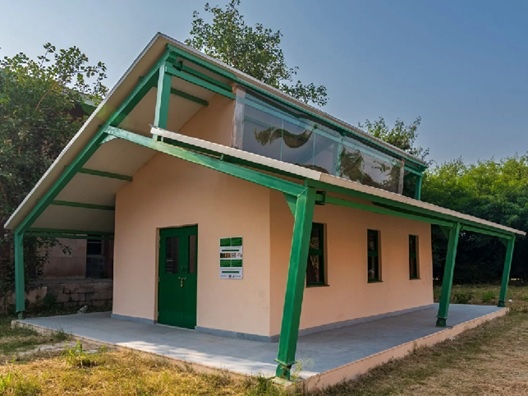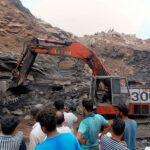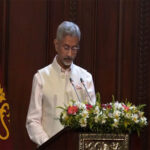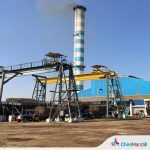Staff and students from the University of East London (UEL) have collaborated to construct a school in India using Sugarcrete, an innovative biomaterial made from sugarcane waste.
Located in the city of Noida at Panchsheel Balak Inter College, the classroom is the first structure to be constructed from the low-carbon Sugarcrete construction material, which was developed in 2023 by the University of East London (UEL). Made from bagasse, sugarcane’s fibrous byproduct, Sugarcrete is combined with mineral binders and shaped into interlocking blocks. This innovative material boasts a carbon footprint six times smaller than traditional fired clay bricks, offering a more sustainable option for construction, according to the company.
The project was co-created by Alan Chandler, an associate at UEL’s Sustainability Research Institute, and Armor Gutierrez Rivas, a senior lecturer at UEL. They collaborated with postgraduate architecture students to design the classroom. The interlocking Sugarcrete blocks were manufactured by Indian company Chemical Systems Technologies and used to form the walls of the classroom, which were built on a concrete slab and held together with lime mortar.
The classroom’s design includes a green-painted steel frame supporting an angular roof with a clerestory window that allows natural light to flood the space. Chandler explained that the rooflight not only provides abundant natural lighting but also enables high-level ventilation, which is particularly useful in the hot Indian climate. Additionally, the design incorporates a veranda, offering shelter during the monsoon season and protecting the walls from heavy rainfall.
The interior walls are partly covered with clay plaster, and the building is designed to be acoustically insulated and thermally comfortable, creating an ideal environment for both learning and community skill development. Chandler and Gutierrez Rivas emphasized that Sugarcrete is more than just a construction material, it represents a system for fostering low-carbon, inclusive development, benefiting both the environment and the local community.
Currently, the duo is working on another school project in Hisar, India, in partnership with the Paryatan Foundation, an educational nonprofit. Their long-term goal is to continue collaborating with local groups and promote the use of Sugarcrete as a sustainable construction method globally.
Reflecting on the lessons learned from this project, Chandler said, “This experience has been invaluable in showing how Sugarcrete can help communities transition to more sustainable building practices.” Despite the ease of using the blocks, he acknowledged challenges, such as ensuring the availability of materials and the necessary skills for lime-based renders. Nonetheless, he expressed confidence that, with the commitment of local partners, the team is making significant progress toward revolutionizing the construction industry.
















